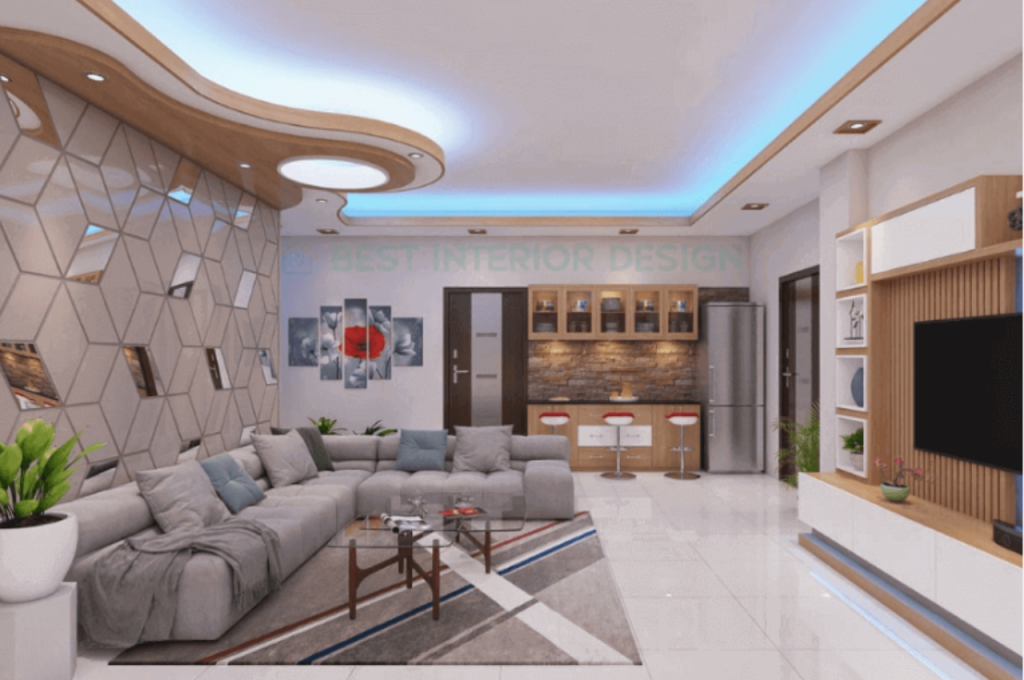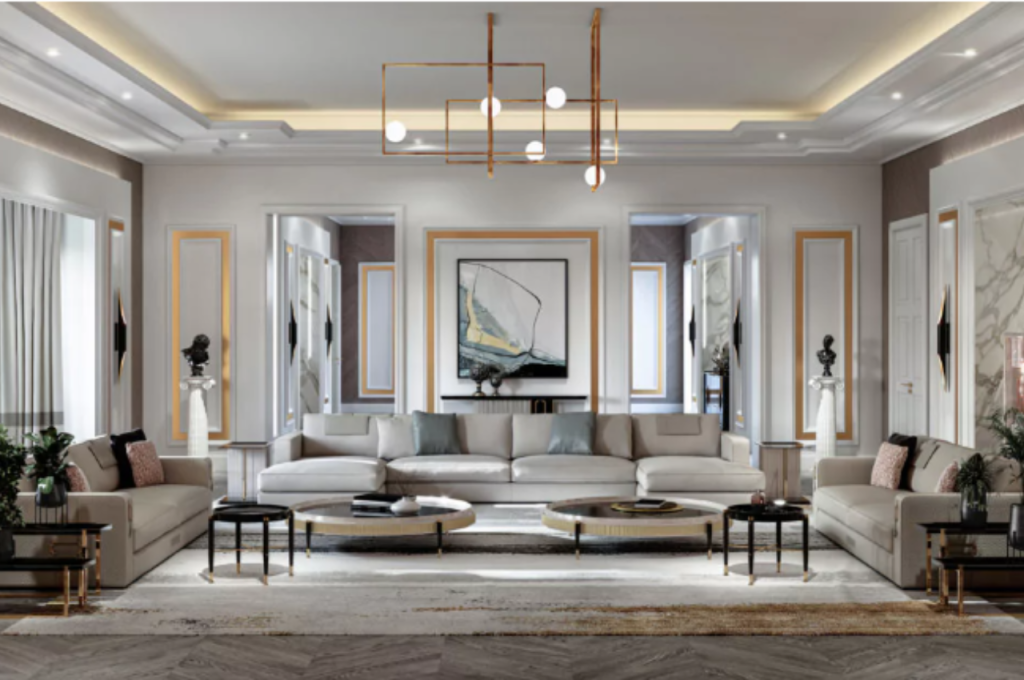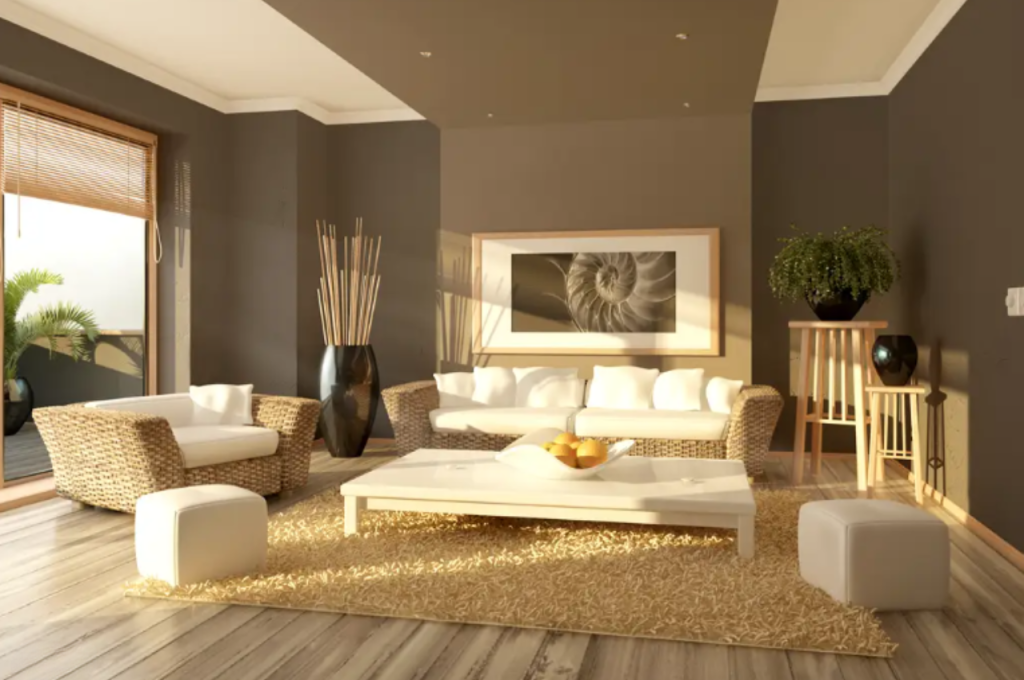Master interior design is a degree program that trains students to design functional and aesthetic environments. In this program, students learn about design principles, materials, space planning, and color theory to create spaces that are both beautiful and useful.
Interior design is a field that blends creativity with practicality to create functional and aesthetically pleasing spaces. As an interior designer, you must have an eye for detail and an understanding of design principles to create spaces that meet your client’s needs.
Master Interior Design is a degree program that focuses on developing these skills through a combination of coursework, hands-on training, and real-world experience. In this program, you will learn about design history, space planning, materials, and color theory to create spaces that are both beautiful and functional. With a Master’s Interior Design degree, you can pursue a variety of careers in this exciting and dynamic field.
Understanding Interior Design
Are you looking to spruce up your living space with a bit of design magic? Master Interior Design is your ticket to an enchanting and functional home. Before diving headfirst into the world of interior design, let’s first understand what interior design is and why it matters.

The Importance of Interior Design
Interior design is more than just arranging furniture or picking out a color scheme. It is about creating a harmonious space that serves both practical and aesthetic purposes. A well-designed space can enhance one’s mood, and increase productivity and quality of life while reflecting one’s style and taste. Interior design can also increase the value of your property, making it a wise investment for homeowners and renters alike.
Elements of Interior Design
Interior design is composed of several essential elements that work together to create a cohesive and inviting space. The most common elements include:
| Element | Description |
| Color | The use of color to create a mood or atmosphere in a room |
| Lighting | The use of light to enhance the space and create ambiance |
| Texture | The use of different textures to create depth and interest |
| Pattern | The use of patterns to add visual interest and dimension |
| Scale | The proportion of objects to the space they occupy |
| Balance | The arrangement of objects to create visual equilibrium in a space |
By understanding and implementing these elements, you can transform any living space into a stylish and functional environment that perfectly reflects your personality and lifestyle.
Creating A Design Plan
Interior design planning is a crucial process that determines the success of any interior design project. A well-crafted design plan can help to mitigate mistakes and save on costs, making for a more satisfactory outcome. In this post, we’ll discuss how to create a comprehensive interior design plan, outlining the key steps to follow.
Assessing Your Space
The first step in creating an interior design plan is to assess your space. You need to consider the room’s size, shape, lighting, and any structural peculiarities to determine what kind of design scheme is best suited. You should note the height of the walls, floor plan dimensions, windows and door locations, and other architectural features that could impact the layout plan. Consider your lifestyle and taste to establish the mood and personality that you want your space to elicit.
Setting A Budget
Setting a budget is an essential part of designing your space. Once you have assessed your space, you need to decide how much money you can invest in your interior design project. You should evaluate the cost of decor, furniture, and materials to assess what is economically feasible. A vital tip to consider when setting a budget is to allocate amounts for contingencies as unforeseen circumstances can arise during the design process.
Developing A Timeline
Developing a timeline is also critical in the interior design plan. A timeline outlines the critical steps of the design process and helps to manage the delivery of the project. It determines opening dates, installs, and delivery dates and ensures that everything falls into place. Essential aspects to incorporate in your timeline include task duration, deadlines, and project milestones. Once you establish these critical dates, you can develop a more in-depth plan that includes specific tasks to be done to ensure timely completion of the project.
Choosing Colors and Materials
When it comes to creating a visually appealing and functional interior space, choosing the right colors and materials can make all the difference. In this article, we’ll explore some key considerations for selecting color schemes and materials that will help you bring your interior design vision to life.
Color Schemes
Color is a powerful tool in interior design, and the right color scheme can set the tone for an entire space. Whether you’re aiming for a cozy, inviting atmosphere or a sleek and modern vibe, your choice of colors will play a major role in achieving your goals.
Here are some key tips for choosing a color scheme:
- Consider the purpose of the space and the mood you want to create.
- Choose complementary colors that work well together.
- Experiment with different shades and hues to achieve the desired effect.
- Keep in mind the natural lighting of the space and how it may affect the colors.
Types of Materials
The materials you choose for your interior design can have a big impact on both the look and feel of the space. From furniture to flooring to decorative accessories, every material has its unique characteristics and benefits.
Here are some common materials used in interior design:
| Material Type | Benefits |
| Wood | Durable, versatile, natural, warm |
| Metal | Sleek, modern, durable, easy to clean |
| Glass | Reflective, transparent, modern, sophisticated |
| Textiles | Soft, comfortable, versatile, add texture |
Mixing and Matching Materials
One of the most fun parts of designing a space is experimenting with different materials and textures to create a unique and interesting look. However, it’s important to keep in mind some basic principles to ensure that your design choices work well together.
Here are some tips for mixing and matching materials:
- Choose a dominant material and use others as accents.
- Be mindful of color palettes and choose materials that complement each other.
- Think about texture and choose materials with a variety of tactile experiences.
- Use contrast to create visual interest and balance.
By following these guidelines for choosing color schemes and materials, you can create a beautiful and functional interior design that truly reflects your style and vision.
Furniture Selection and Placement
Selecting and placing furniture can have a huge impact on the overall look and functionality of a room. As a master interior designer, it’s important to consider factors like spatial awareness, scale, and color when choosing pieces and arranging them in a way that optimizes the space.

As an interior designer, selecting the right furniture and placing it in the right location can make or break the overall look and feel of a space. In this blog post, we will discuss some tips on how to choose the right furniture, strategies for furniture placement, and creative storage solutions to enhance the aesthetic appeal of your design.
Choosing the Right Furniture
The first step in choosing furniture is to determine the purpose of the room. Consider the function of the room, its size and shape, and the existing color scheme. When selecting furniture, keep in mind the style of the room and how the furniture will fit in with that style. Here are some things to consider when choosing furniture:
- Size and Scale: Ensure that the furniture is the right size and scale for the room.
- Comfort: Look for furniture that is comfortable and supportive.
- Color and Material: Consider the color, texture, and material of the furniture, and how it will complement the overall aesthetic appeal of the room.
- Function: Choose furniture that serves its intended purpose, such as seating, storage, or surface space.
Furniture Placement Strategies
Once you have selected the right furniture, it’s important to place it in the right location. Proper furniture placement can make a room feel spacious, comfortable, and inviting. Here are some strategies for furniture placement:
- Start with the focal point: Identify the focal point of the room, such as a fireplace, view, or artwork, and arrange the furniture around it.
- Create zones: Divide the room into different zones based on their function, such as a seating area, a reading nook, or a work area.
- Think about traffic flow: Ensure that there is enough space for people to move around the room comfortably without tripping over furniture.
- Use the right size of the furniture: Avoid overcrowding the room by selecting furniture that is the right size and scale for the space.
Creative Storage Solutions
Incorporating creative storage solutions into your design can help maximize space and minimize clutter. Consider using multi-functional furniture, such as ottomans with built-in storage, or incorporating shelving and cabinetry into your design. Here are some creative storage solutions to consider:
| Furniture | Idea |
| Sofa | Choose a sofa with a hidden pull-out bed. |
| Bed | Select a bed with built-in storage drawers underneath. |
| Ottoman | Use an ottoman with built-in storage for blankets, books, or DVDs. |
| Shelving | Incorporate open shelving to showcase decorative objects or to store books. |
| Cabinetry | Install cabinetry with pull-out drawers and adjustable shelving to maximize storage capacity. |
Selecting the right furniture and placing it in the right location is fundamental to creating a well-designed interior. With the right strategies for furniture placement and creative storage solutions, you can transform any space into a beautiful and functional environment.
Lighting Design
Mastering the art of lighting design is crucial for creating the perfect ambiance in any interior space. Lighting design can transform a room, highlighting key features, creating moods, and improving a sense of well-being. With a trained interior design eye, you can bring your lighting schemes to the next level.
Lighting is an integral part of interior design. It can greatly influence the ambiance of a room and can even affect a person’s mood. In this article, we’ll explore the different types of lighting, the importance of natural light, and how to create ambiance with lighting.
Types of Lighting
There are three main types of lighting: ambient, task, and accent lighting.
- Ambient lighting: This is the lighting that provides overall illumination to a room. It can be achieved through ceiling-mounted fixtures, wall sconces, or even floor lamps.
- Task lighting: This type of lighting is used to illuminate specific tasks, such as reading or cooking. It can be achieved through desk lamps, under-cabinet lighting, or pendant lights.
- Accent lighting: Accent lighting is used to highlight specific features within a room, such as artwork or architectural details. It can be achieved through spotlights, track lighting, or even candles.
The Importance of Natural Light
Not only is natural light beneficial for our health and well-being, but it can also enhance the look of a room. Natural light can be diffused through fabrics or blinds to create a soft and welcoming ambiance. Large windows or skylights can also make a small space feel larger and more open.
Creating Ambiance With Lighting
The key to creating ambiance with lighting is to use a combination of ambient, task, and accent lighting. This will help create layers of light that can be adjusted as needed to suit a particular mood or occasion. Here are some tips for creating ambiance with lighting:
- Use dimmer switches to adjust the brightness of the lights.
- Combine different types of lighting to create a layered effect.
- Place lamps in different areas of the room to create pockets of light.
- Use warm-colored bulbs to create a cozy atmosphere.
- Consider the placement of mirrors to reflect light and create the illusion of more space.
Accessorizing Your Space
When it comes to interior design, accessorizing your space is a crucial part of the process. Choosing the right accessories can transform a room and add personality and character to your home. In this post, we will discuss some tips and tricks for accessorizing your space to achieve the perfect interior design.

Finding the Right Accessories
Before you start adding accessories to your space, it’s important to find the right ones. Think about your style and the colors, textures, and patterns that you love. This will help you select accessories that suit your taste and complement your existing furnishings and décor.
You can find accessories in a variety of places like online stores, home décor shops, and even your local thrift store. Keep an eye out for unique pieces that catch your eye, but be mindful of your overall décor scheme.
When choosing accessories, don’t forget to consider the function of the space. For example, if you’re accessorizing your living room, you may want to include items like throw pillows, blankets, and coffee table books.
Creating Focal Points
One of the most important aspects of accessorizing your space is creating focal points. These are the areas of the room that draw the eye and make a statement. Focal points can be created with a variety of accessories such as artwork, rugs, and lighting fixtures.
To create a focal point, select an accessory that stands out and is visually appealing. This could be a bold piece of art or an interesting patterned rug. Then, arrange your other accessories around it to draw attention to the focal point.
Don’t be afraid to mix and match accessories to create a unique and eclectic look. Play with different textures and colors to add interest and depth to your space. Just remember to keep the overall design cohesive to prevent your space from looking cluttered or chaotic.
The Importance of Scale and Proportion
When accessorizing your space, it’s important to consider scale and proportion. This means selecting accessories that are the right size for your space and your furniture. Accessories that are too small or too large can throw off the balance and harmony of the room.
For example, if you have a large sofa, you may want to select larger accessories like floor lamps or oversized art pieces. On the other hand, if you have a small side table, you may want to select smaller accessories like a decorative vase or a single candle.
In addition to size, it’s also important to consider the proportion of your accessories. For example, if you’re hanging artwork on the wall, make sure the size of the frame is proportional to the size of the wall. This will help to create a balanced and harmonious look.
Conclusion
In designing your interior spaces, remember that it’s essential to prioritize functionality alongside aesthetics. By keeping your space organized, harnessing natural light, and using the right selection of materials, you can create a more inviting, comfortable, and harmonious living space.
Having a well-designed interior space can positively impact your lifestyle, mental health, and overall well-being. So take your time, experiment, and let your personality shine through. Happy designing!

